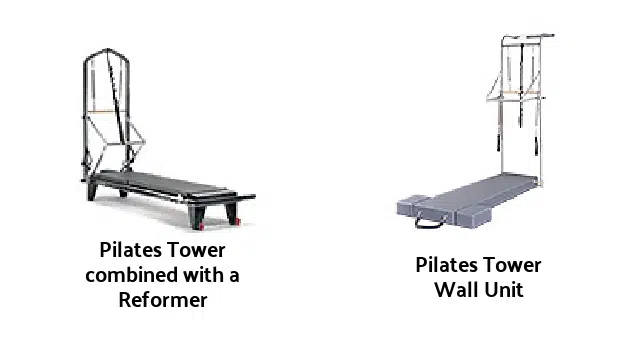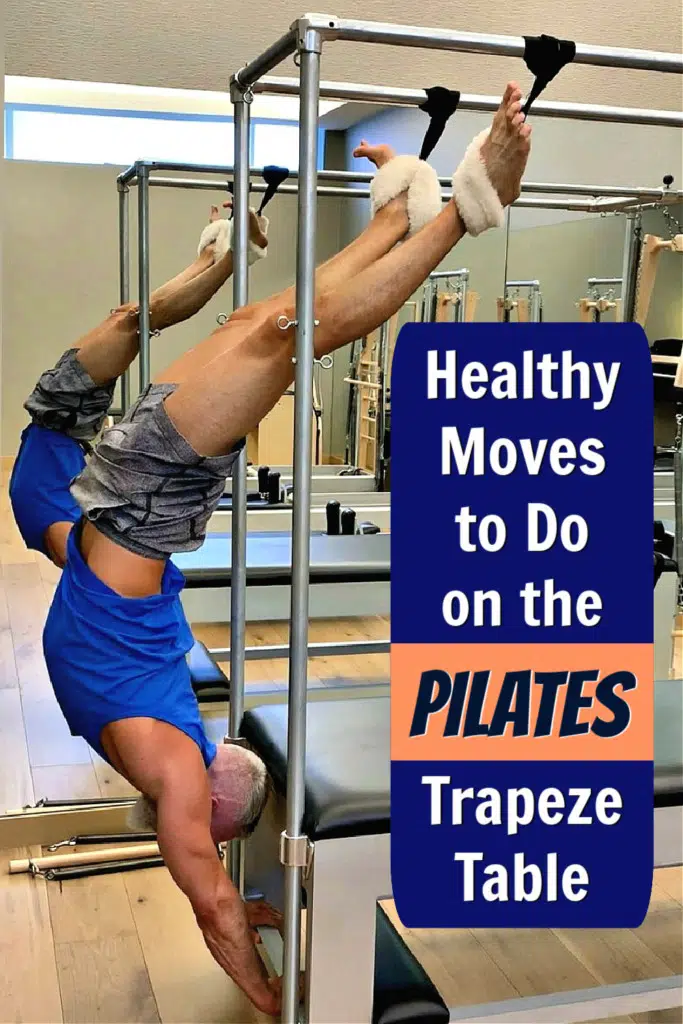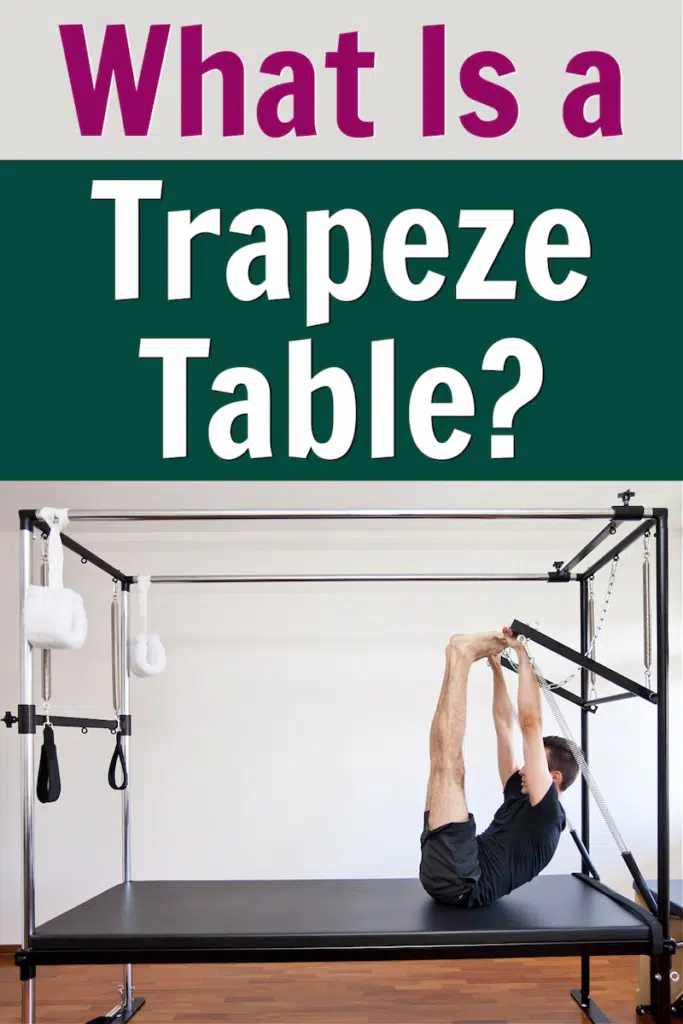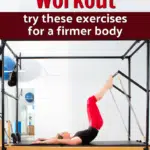Pilates Tower exercises will develop your core strength, improve your flexibility, and generally firm your entire body – helping it to look and feel better. What follows are descriptions of highly effective exercises – including video – that can be done on either the Pilates Tower or the Trapeze Table.
One compelling research study concluded that Pilates exercise offers significant improvements in pain and functional ability in the short term for people with chronic lower back pain. Additionally:
For women, a systematic review focusing on the effects of Pilates on women’s health and well-being found evidence of physical benefits, including improvements in flexibility and muscle strength. The review analyzed various studies that reported positive outcomes in physical health measures, such as body mass index (BMI) and lower limb flexibility, following Pilates interventions. These findings suggest that Pilates can be beneficial for enhancing core strength and flexibility, particularly in women with various health conditions.
For men, an objective investigation looking into the acute effects of Pilates on mood states found that a single 30-minute session of mat-based Pilates significantly reduced state anxiety, feelings of fatigue, and total mood disturbance, while increasing feelings of energy. This study suggests Pilates can have positive mood state responses. In terms of the impact of Pilates on men’s bodies, I can report anecdotally – after decades of doing Pilates for myself and my clients – that men, who tend to have more muscle mass, find Pilates helpful in releasing tightness. It’s also beneficial for creating symmetry in the physique (since men often have more arm, chest, and shoulder strength relative to the strength of their glutes and legs). And I’ve never found anything better for creating definition and firmness in the abdominal wall.
Where Can I Do Pilates Tower Exercises or Trapeze Table Maneuvers?
The genius of Pilates exercises is that they improve joint mobility and posture while sculpting muscles and increasing abdominal strength.
While some home gyms and commercial gyms have Pilates Reformers and Pilates Wunda Chairs, it’s rarer to see a Pilates Tower or a Trapeze Table.
- The Pilates Tower vertical unit is often attached to a Reformer’s end, so it’s a two-in-one piece of equipment – a Reformer and a Pilates Tower combined.
- Conversely, the Trapeze Table is its own piece of equipment, separate from a Reformer. The “trap table” has two ends and a vertical dimension with parallel bars near the ceiling.
The Trapeze Table is the largest piece of Pilates apparatus available. It looks like it could be a torture device from the Spanish Inquisition – or perhaps brings to mind a competition category in Olympic gymnastics.
This equipment was invented by Joseph Pilates, who was born in Germany in 1883 and later had a thriving Pilates studio in New York City, where he developed a rehabilitative fitness methodology called Contrology.

Today, you can find the Pilates Tower or a Trapeze Table at a private pilates studio for one-on-one private sessions, or at a gym that offers Pilates Tower classes – or even inside the home of a true fitness enthusiast. I have Pilates equipment in my home gym, and I use it almost daily.
As funny-looking as a Pilates Tower or a Trapeze Table appears at first glance, they are highly efficient apparatuses that:
- benefits both young people and the aged.
- It benefits beginners who need joint rehab and advanced-level athletes who want to bring their strength and sports performance up to the next level.
Pilates Tower VS Pilates Trapeze Table
Though it’s many people’s favorite piece of fitness equipment, the Pilates trapeze table is also the least common Pilates apparatus simply because it requires the most space.

Many people opt to add a Pilates Tower to their Reformer bed instead. This takes up far less space.
For a home gym, purchasing a Pilates Tower can be a worthwhile investment because there are so many strength training exercises and stretches that can be done for a full-body workout:
- movements can be done sitting on the table, kneeling, and standing on it.
- all of the Pilates mat exercises can be done lying on it.
- calisthenics can be done standing on the floor, off the side of the table, or at the ends.
- in the case of the Trapeze Table, Cadillac exercises can be done elevated off the table using parallel bars.
The Pilates Tower and the Trapeze Table both include a variety of attachments – including a foot bar, a trapeze bar, foot straps, leg springs, and arm springs.
Pilates Exercises
The Pilates Tower unit is good for both males and females – and almost all the stretches and exercises can be modified to match a person’s unique fitness level or age.
By the way, I encourage you to opt-in to my free weekly update. It will not only provide you with helpful diet and exercise tips but – perhaps most importantly – it will help you stay inspired and keep your health moving in a beneficial direction.
Here are some examples of fun moves you can try. Remember that to do a Pilates exercise optimally requires focus. Direct your attention inwardly and see if you can determine which of your muscles are engaging during any given movement.
Abdominal Forward Crunch and Quad Stretch Series
The quadriceps and hip flexors can get so tight from sitting and driving.
Additionally, our modern sedentary lifestyles contribute to the weakening of our core muscles.
This quad stretch series with abdominal forward crunching is the antidote!
The springs attached to the trapeze bar provide traction and help make it possible to modify the series so that even people with sensitive knees and tender lower backs can still complete a variation.
When doing this quadricep backbend maneuver, try to keep your lower back from over-arching by keeping your glutes a tad active and your pelvis scooped forward a bit. I use blocks to help protect my knees from becoming overstretched.
Teaser on the Trapeze Table
The teaser exercise is similar to the boat pose in yoga. It develops abdominal strength while also creating length in the spine.
Parakeet, Swan, Reverse Push-Through
I use two short blue springs on the trapeze bar for the parakeet move. Wear socks with gripping beads on the soles to prevent slipping (or, if you’re going barefoot, make sure you don’t have lotion on your feet)!
Mermaid or MerMan Stretch Series for the Upper Body
The mistakes many people make while doing oblique exercises are using extra resistance and crunching the spine. You don’t want to add thickness to your waist! This exercise strengthens your obliques without adding extra size.
“The focus on controlled movements and breathing patterns in Pilates engages deep core muscles, which are crucial for stability and preventing injury. Incorporating Pilates into one’s fitness regimen can lead to improved posture, better balance, and increased muscle tone, making it an invaluable practice for individuals at any fitness level.”
–Dr. Sarah Johnson, PhD in Exercise Physiology
The final move of this series helps open up tight hips.
For many people, their outer thighs get very stiff, which can create a negative side tilt to the pelvis, making each leg a different length! Keeping your outer thigh muscles supple helps your lower back stay vertebrae healthy and properly aligned.
Back Bend (advanced)
I was warmed up when I filmed this video below, and my spine felt bendy. Normally, however, I might not add so much of a lower-back arch to my backbend and instead would keep my top rib compressed. It just depends on your personal stage of flexibility on a particular day. Generally, it’s always best to proceed cautiously with backbends.
Candlestick Maneuver (advanced)
Inversion poses can be helpful for your circulation and vein health.
The veins in my legs sometimes get too pronounced, which could mean my veins struggle to pump blood back toward my heart.
Inversion poses to the rescue!
Keeping the legs elevated above the head relieves circulatory pressure on your legs and feet.
Also, inversion poses can be a real mood elevator (perhaps because of the increased blood flow to the brain).
The candlestick maneuver is an inversion pose that develops abdominal strength and shoulder mobility. This one is usually for intermediate to advanced-level athletes who are already warmed up. It’s different from the floor version often seen in gymnastics.
In case you were thinking of getting a full trapeze table for your home gym area, keep in mind that it requires an ample amount of space:
- the table width is 29 inches (or 74 centimeters).
- the width of the table – including push-through bar adjustment knobs – is 30.25″ (76cm).
- the length of the table is 81″ (206cm), plus 4.5″ (11cm) for the canopy brackets.
- trapeze frame height (from top to floor) is 81.5″ (204cm).

In my opinion, the trapeze table works best when there is space all around it. It’s tempting to try to save space by pushing one end of the table close to a wall, but I don’t recommend it. There should be room to stand all around the table. If you’re working with a smaller space, I recommend getting a wall unit or beginning your Pilates practice with mat work instead. It requires very little space!
–Joseph Pilates
“You are only as young as your spine is flexible.”
Pilates is a total body exercise system of properly aligned movements that improve endurance, joint mobility, spinal flexibility, and muscular strength.
As always, consult with your own medical doctor before making any significant changes to your exercise or diet habits.
This article provides just a general overview with a few examples. To see one video of the trap table with all of its most popular exercises, go to Part II, “A Complete Trap Table Workout.”
